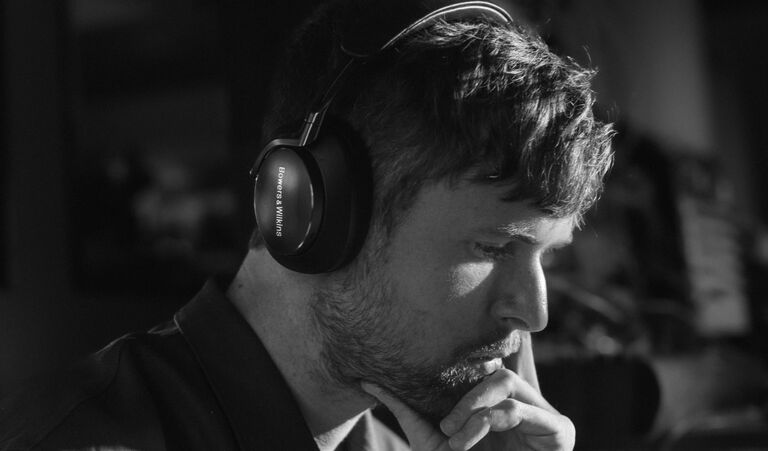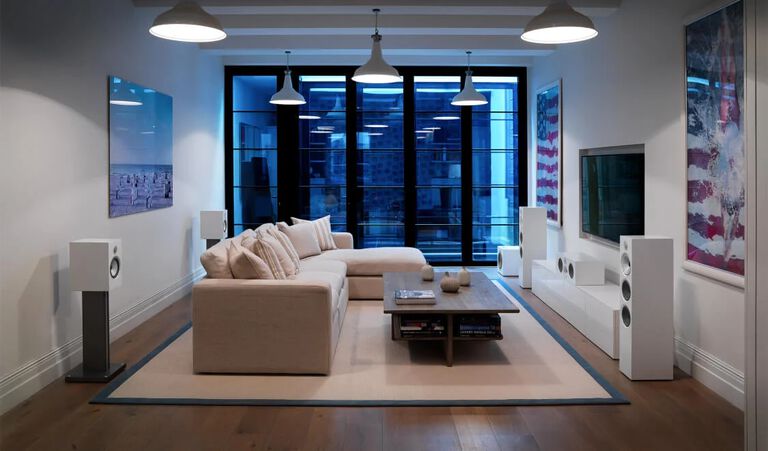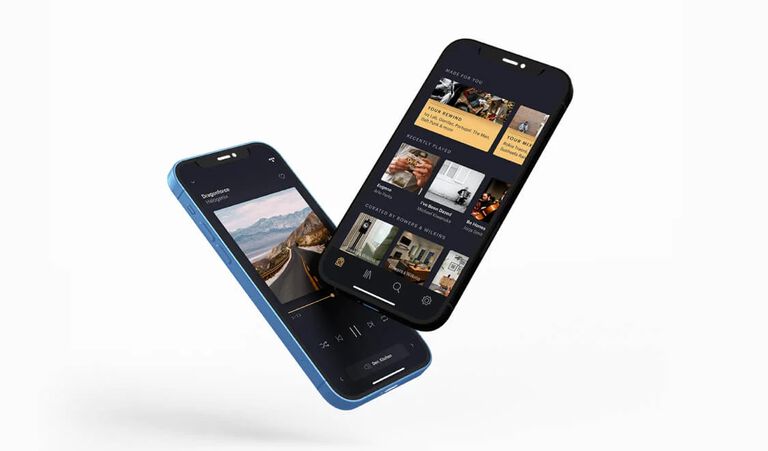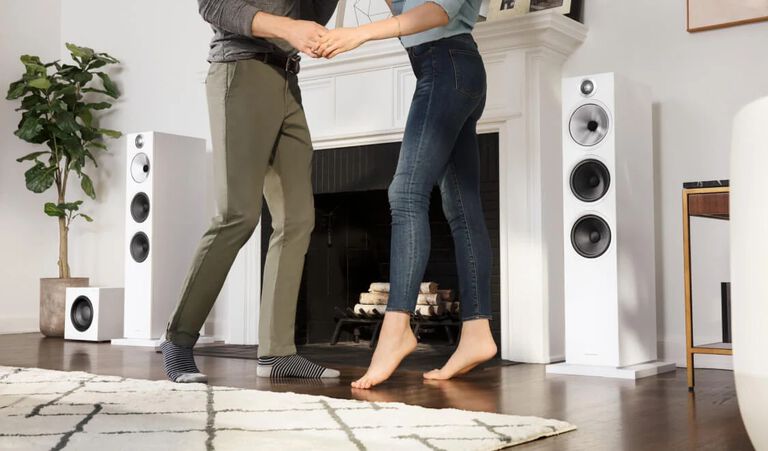James Blake and Bowers & Wilkins: Structuring Robots Into Heaven
James Blake and Bowers & Wilkins join forces to unveil the magic behind the artist’s excellent sixth studio album.

James Blake is undoubtedly one of the most talented musicians of the last decade. His deft ability to effortlessly blend electronic soundscapes with avant-garde song writing has secured his icon status in both underground and mainstream music.
From his inspired beginnings, reimagining Dubstep and other genres into experimental electronic masterpieces, to his extensive catalogue of exceptional, award-winning EPs and albums, Blake's distinct style has influenced countless artists and changed the way many approach their music creation.
During his career in music, he’s lent his production mastery to some of the most prominent voices in music, including Kendrick Lamar, Beyoncé, Vince Staples, Frank Ocean, Rosalía, JID, Dave, and Travis Scott, infusing his unique ideas and hallmarks into their critically acclaimed records.
Playing Robots Into Heaven
James Blake's most recent album, Playing Robots Into Heaven, is his most vulnerable yet, seeing him return to a purer form of electronic music that has been the foundation of his career. The 11-track record sees Blake fully embrace his electronic roots, offering a rich blend of his pensive, soulful vocals, countless modular synths and sampling – all processed in extraordinary ways.
Featuring four-on-the-floor, UK Club and Rap-inspired bangers, Playing Robots Into Heaven sees Blake take these familiar dancefloor formulas and reinvent them, giving them a fresh, experimental feel.
Supporting creativity
At Bowers & Wilkins, we’re as passionate about engineering world-class audio products as we are about the music that is listened to on them. Our pursuit of delivering the True Sound of an artist’s performance is the driving force behind every decision we make – so supporting artists and giving them a platform to aid their creative projects is incredibly important to us.
To coincide with James Blake’s new album, we partnered with the English producer and singer-songwriter to celebrate the ground-breaking artistry behind his new album and delve a little deeper into how he brought his creative vision to life.
Structuring Robots Into Heaven (Part One)
In the first part of our series of short films with Blake, we joined him in his LA-based studio to explore the creative process behind his excellent sixth studio album, Playing Robots Into Heaven.
With years of crafting releases under his belt, Blake’s arsenal of tools and production techniques is at its strongest and most refined yet. “On almost every other album, I’ve been learning how to do something,” he explains. “This felt like all those skills were already there, and all I had to do was just do it.”
But, even though he possessed everything he needed to create the record he envisaged, there was still something else on his mind – acceptance. “One of the things I had a slight confidence issue with was whether people would actually accept it as a James Blake album. I was worried it was too crazy.” Crazy? Maybe. Brilliant? Definitely.
This sense of vulnerability around the album didn’t stunt his drive for experimentation. His collage-based approach, as used on his first album, was in full force again, seeing him create 200 modular jams to use in the album’s production, harnessing the power of the modular synth. You may be thinking, 200 is an awful lot to work with – but that’s because 140 of the ones created for Playing Robots Into Heaven, as he says, “sound like Hell,” and he needed to find the best of the best.
Vulnerability and sifting through ‘hellish’ soundscapes to find the perfect tonal balance aside, he admits that the new record represented him completely: “I loved it so much, I had to stand behind it.” Blake wanted to deliver a collection of tracks that evoked the feeling of ascension, and Playing Robots Into Heaven does exactly this through its rich sonic palette.
Blake’s listening environment is essential to his craft. “I like speakers that don’t add too much in terms of artificial EQ or hyping up the high-end or whatever,” he tells us. “I like things that make vocals sound natural, and I think being able to hear all of the character of the way it’s been recorded is important.”
Bowers & Wilkins understand this fundamental need to experience sound with nothing added and nothing taken away, it’s the cornerstone of our audio engineering philosophy. It’s why we’re dedicated to working with artists like James Blake to provide them with the tools they need to reveal the True Sound of their performance at every step of the creative process.
Structuring Robots Into Heaven (Part Two)
As much as James Blake’s new record was designed to ignite feelings of ascension, Playing Robots Into Heaven needed to translate confidently into the live space. In the second part of the series, we explore how Blake accomplished this, delving into one of the record’s clubbiest cuts – Tell Me.
Having ‘cut his teeth’ making dance music, and continuing to make it every year for the last eight or nine years, creating music that would capture the essence of the club scene came instinctively to Blake. “The sounds I use in all my music are electronic; there's always synths involved and techy piano manipulation and vocal manipulation, so, to me, electronic music is just music at this point,” he explains.
Taking a more minimalistic approach to these dancier jams was a tried and tested method for Blake when crafting atmospheres that resonate with his live audience. “Your brain’s only got room for like three things in a club. Drums, bass and something.” His track Tell Me, as seen in episode two, is the perfect example of this.
The track’s hook alone is enough to elicit that building euphoria every great dance song needs. In this case, it’s a catchy modular riff, shining through endless reverb and other hypnotising effects.
If you can’t wait to watch the magic unfold in real life, our video with James Blake gives a peek into how this dancefloor gem manifests live. With the backdrop of the Bowers & Wilkins one-of-a-kind PA, Sound System, powering the live sound of Tell Me in all its deserving glory, James Blake showcases the euphoria of the track in a big-scale industrial setting at the Tate Modern’s South Tank.
Playing Robots Into Heaven ticks all the boxes for fans of James Blake – and passionate lovers of dance music in general. It’s a record of epic proportions that ultimately delivers the most accurate sound of Blake’s artistic intent. James Blake recently upgraded his studio monitors to Bowers & Wilkins’ flagship 800 Series Diamond loudspeakers, and we’d highly recommend anyone and everyone who loves boundary-pushing sound to give this excellent album a listen-through on the same speakers – you won’t be disappointed.
James Blake’s excellent album, Playing Robots Into Heaven, is available to stream on Qobuz, TIDAL, Spotify and Apple Music. To buy the new record in a range of physical formats, including vinyl, CD and cassette, head to James Blake’s official website here.


